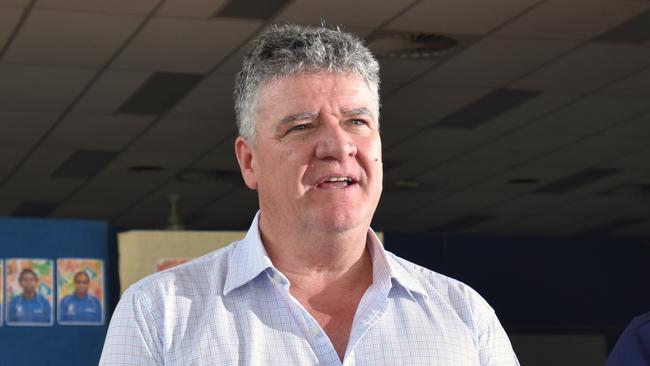143 teacher vacancies across NT schools ahead of 2024 school year
Teacher vacancies have reached an alarming high with just two weeks to go until the 2024 school year starts.

Education
Don't miss out on the headlines from Education. Followed categories will be added to My News.
NT schools are currently looking to fill 143 vacancies across 153 schools, just two weeks out from the start of the school year.
There were just 36 school vacancies in January 2023.
Education Minister Mark Monaghan on Friday said the recruitment process among teachers usually “bottlenecks” over the January break.

“This is the most active period for recruitment,” Mr Monaghan said.
“Most teachers actually make a decision about their future over the January break.”
Mr Monaghan said he had no concerns about getting enough teachers in front of kids in 2024.
“This is a day-by-day proposition - we already have 33 people going through the process to come into that number,” he said.
“Tomorrow, you may not have that number... it chnages very rapidly at this time of year.
“In two weeks’ time when I welcome the new teachers into the Territory, that’s where I’ll expect to have a very good indication about how successful we are in that (recruitment) space.”
But Mr Monaghan said he “absolutely” held reservations going forward.
“Consistency of educators in communities is a really important thing,” he said.

Australian Education Union NT president Michelle Ayres said the apparent spike in school vacancies was concerning but unsurprising.
Ms Ayres said many of the vacancies likely came from an increase of about 100 Central Australian teaching jobs thanks to a $40m funding injection to the region.
The injection comes as a $3500 retention bonus comes into effect in 2024 in an effort to attract and keep high quality educators.
But she said other states’ “remote” schools were more easily attracting staff than NT schools, deepening the Territory’s teacher shortage.
“You’re seeing places in News South Wales, Victoria, Queensland offered bonuses for attraction and retention to places like Bendigo, and Darwin is more remote the Bendigo,” she said.
“If we’re not able to compete with their attraction and retention (because) our salaries have slipped down – they’re really more middle of the range – and aren’t at … the top level that they used to be, (then) we’re obviously going to be struggling to attract teachers to the Territory.”
Ms Ayres said the flow-on effect of teachers’ climbing attrition rates wasn’t just burnout and workload overwhelm – it also contributed to a decline in school safety if behavioural issues arose.
She said teachers were being forced to do “more and more” to fill workforce gaps and keep kids engaged, including taking on additional students per class.
“I think there’s heaps of teachers in Australia, they’re just not teaching,” Ms Ayres said.
“They’ve walked away from the profession because it’s bad.”




